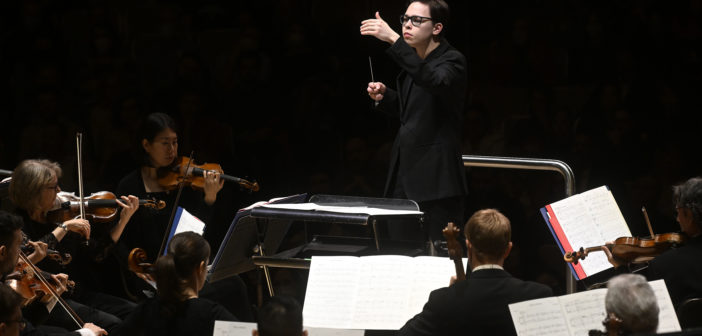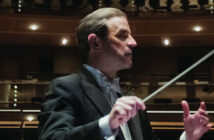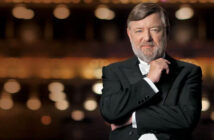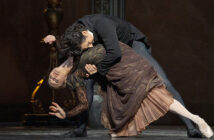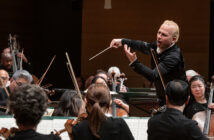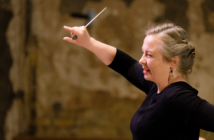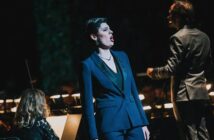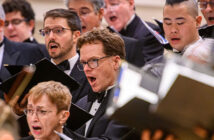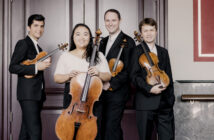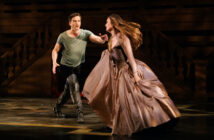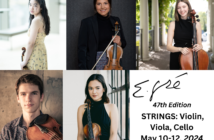It was a wintery night, and the program was particularly well suited for those who braved the storm warnings. The trek to Roy Thomson Hall to hear Shostakovich 5 & Crow Plays Brahms was well rewarded. Listeners voted with their feet and the thunderous multiple standing ovations for guest conductor Tarmo Peltokoski and violinist Jonathan Crow, the TSO’s beloved concertmaster. The selection of pieces and the performances were timely and memorable.
What you missed?
Protégé guest conductor Peltokoski has reportedly received almost as many prizes as his age, 22. His conducting is detailed, insightful and clear and according to his bio, he has studied composing and arranging and reportedly enjoys music comedy and improvisation. All of these talents were well represented at the TSO concert.
The shivery imagery of Ciel d’hiver by Kaija Saariaho fittingly opened the evening. Saariaho is a Finnish composer, celebrated for her sonic soundscapes. Her biographers reference her synaesthesia (an ability to merge different senses, such as sound, colour, texture, tone and light, a trait shared with musicians such as Messiaen). Kudos to the TSO for recreating, in sound, the visual imagery of a night sky through the shimmering sounds of strings and winds. The effect faithfully re-created Saariaho’s imagery of a walk through a winter night.
Next followed Brahms’s Violin concerto in D major, Op. 77, played by Crow. If Saariaho represents the shimmery winter sky, Crow’s Brahms is a hot chocolate with whipped cream, sipped with a gaze toward the heavens The intensity and seriousness of Crow’s playing, his warmth, and technical mastery (highlighted in the brilliant cadenza) are well known to TSO fans. It was a brave selection – Wieniawski famously called the concerto unplayable. But in Crow’s hands, Brahms’s only violin concerto is sheer beauty. As shown in the photo below, the first desks of each of the string sections surround the conductor in an arc like fashion. Peltokoski maintained close eye contact with Crow. The instrumental dialogue took shape cohesively, achieving a perfect balance.

The second part of the program consists of Shostakovich’s Symphony No. 5 in D Minor Op. 47, a work that exudes struggle, despair, sarcasm and lyricism. Peltokoski literally danced, marched and swaggered through the gloom and contrasting sarcastically happy harmonies of the ending, all the while conducting without access to the printed score.
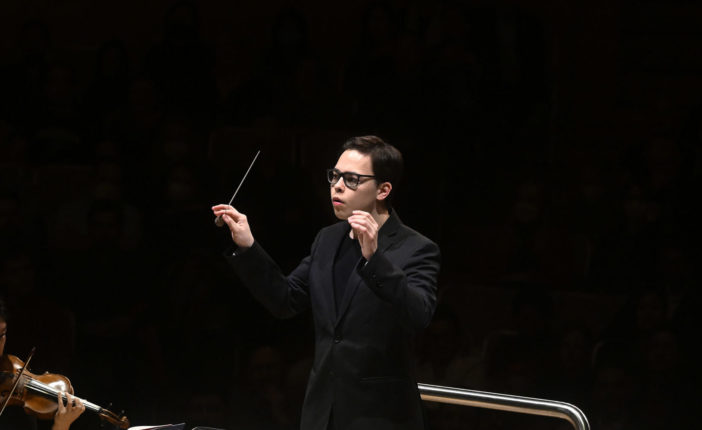
The effect was powerful visually and emotionally as a result of the enhanced communication between conductor and orchestra. Fittingly, shoutouts were given to the winds, brass, percussion, piano, celesta and strings.

